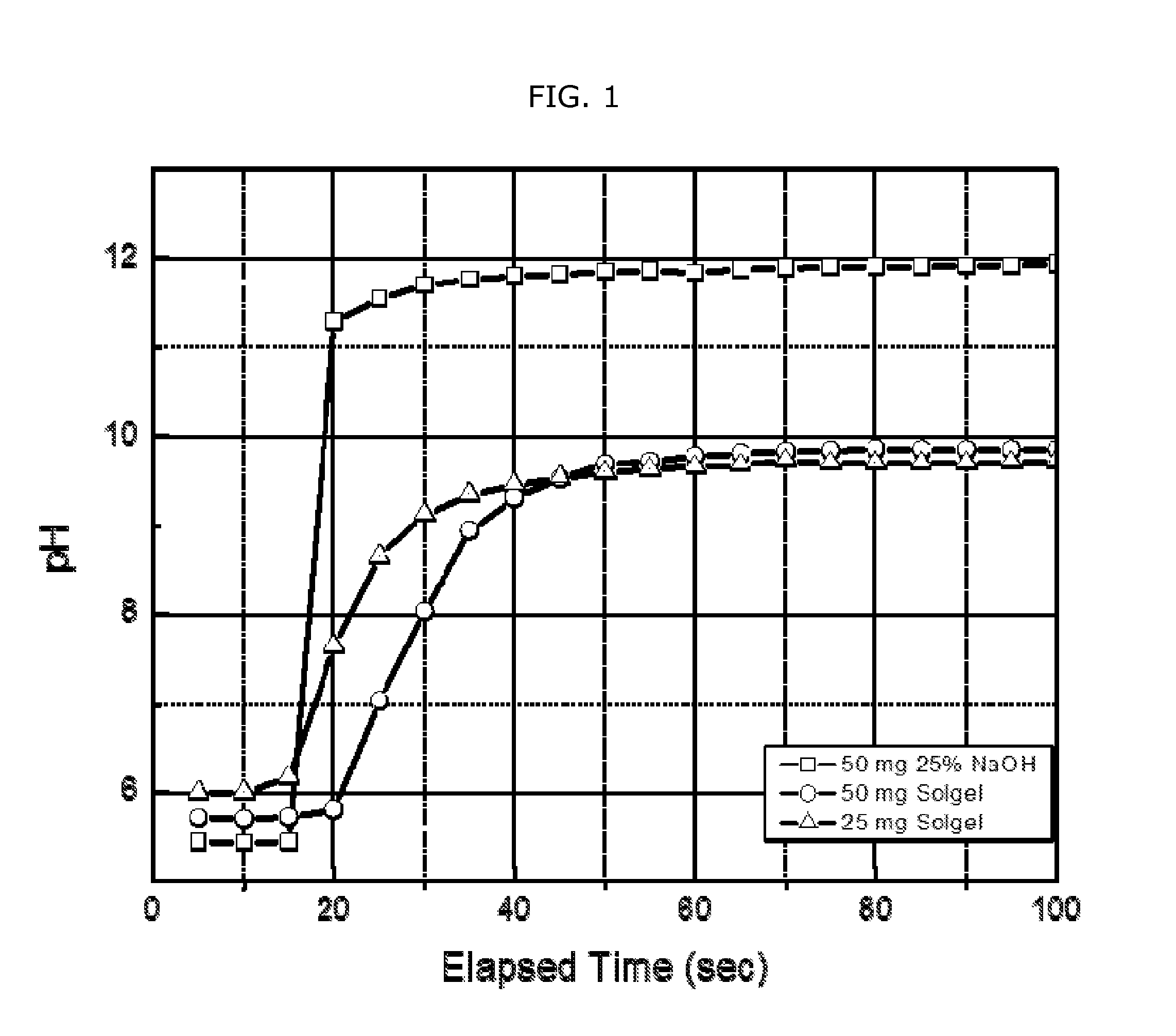Methods of Controlled Release pH Adjustment for Oilwell Stimulation
a technology of controlled release and oilwell stimulation, which is applied in the direction of fluid removal, chemistry apparatus and processes, and borehole/well accessories, etc., can solve the problems of high friction loss within the bore and pipe, and the degradation of fully crosslinked fluids, etc., and achieve the effect of reducing the number of ph
- Summary
- Abstract
- Description
- Claims
- Application Information
AI Technical Summary
Benefits of technology
Problems solved by technology
Method used
Image
Examples
examples
Preparation of NaOH Sol Gel:
[0040]3 g of 25% sodium hydroxide solution is added to 1 g of Sipernat® Silica Gel (Evonik Industries AG, Hanau-Wolfgang, Germany) in a beaker. The mixture is covered and allowed to react at room temperature for 10 days to obtain a solgel material.
[0041]An experiment was run to determine the delay in the change in pH of a test delayed release pH-adjusting material. A pH probe is calibrated using pH 4, 7 and 10 pH calibration standards. For each test sample, 50 ml of Deionized water is placed in a beaker, and a sample of the delayed release pH-adjusting material is added to the beaker while the pH of the solution is being measured continuously. 50 mg of 25% NaOH was used as a control. Two samples, a 25 mg sample of the NaOH sol gel and a 50 mg sample of the NaOH sol gel, were tested as delayed release pH-adjusting materials. FIG. 1 shows the results of the test.
[0042]As can be seen in FIG. 1, both the 25 mg solgel sample and the 50 mg ...
PUM
 Login to View More
Login to View More Abstract
Description
Claims
Application Information
 Login to View More
Login to View More - R&D
- Intellectual Property
- Life Sciences
- Materials
- Tech Scout
- Unparalleled Data Quality
- Higher Quality Content
- 60% Fewer Hallucinations
Browse by: Latest US Patents, China's latest patents, Technical Efficacy Thesaurus, Application Domain, Technology Topic, Popular Technical Reports.
© 2025 PatSnap. All rights reserved.Legal|Privacy policy|Modern Slavery Act Transparency Statement|Sitemap|About US| Contact US: help@patsnap.com

